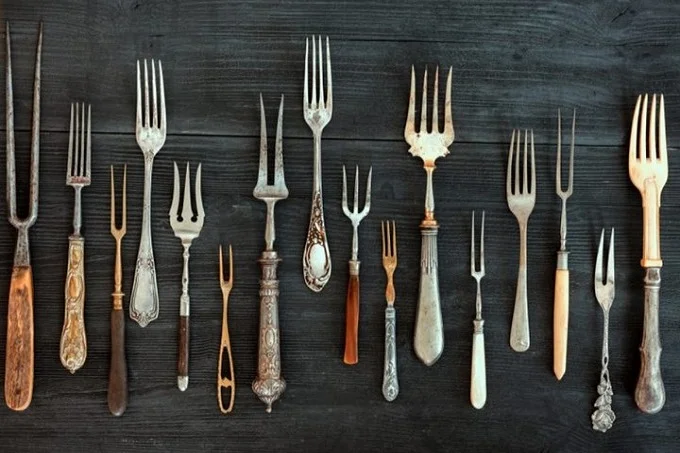We have a tendency to take everyday things for granted. Despite this, many of you may have wondered, Where did the fork originate from? Because of its love of pasta, Italy was the most favored European country for the fork.
When you go a bit further into the history, you’ll find that it’s a little hazy. However, the first known forks were made by the ancient Egyptians, or the Qijia people, who lived between 2400 and 1900 BC in modern-day China. The fork started its trip throughout Europe a few thousand years later, moving from the Italian peninsula. As a result, forks became popular as a culinary utensil throughout Europe’s western and northern regions.
Most Europeans didn’t start using forks in their everyday lives until the 1700s, and the instrument only arrived in America a few decades later.
According to archaeological evidence, the first culinary forks had just two prongs and were primarily employed for cooking or serving dishes. These forks, which were made of bronze or silver, were also employed in ancient Rome, and their usage varied from province to province. Table forks were found in the Byzantine Empire (or Eastern Roman Empire) at a later date, and they may have originated in Ancient Greece.
According to some sources, a fork-like utensil known as a Barjyn was popular in Persia in the second millennium AD, although exclusively among the higher classes. The popularity of this eating tool had expanded across the Middle East by the end of the first millennium, in contrast to Western Europe, where spoons, knives, and fingers were still the preferred option at the dinner table.
Pasta may have been one of the reasons why forks initially became popular in Europe on the Italian peninsula. Italians started utilizing the table fork earlier than the rest of Western Europe, in the 11th century, possibly as a result of their closeness to the Byzantine Empire, but also because the need for pasta was obviously increasing.
The pasta trade in Italy was booming at the time, and various types of pasta were first eaten with a punteruolo, a wooden fork with a single spike. It was quickly discovered that using two spikes rather of one worked wonderfully and that using three spikes on flatware was excellent for eating spaghetti.
Forks and spaghetti were a marriage made in heaven – it was love at first sight. Because Italians were among the first to discover the advantages of forks, they started to use them for a variety of other meals as well.
As some early evidence indicates, the full domestication of forks throughout the peninsula took time. The wedding of the Byzantine princess Theodora Anna Ducaina and Domenico Selvo, son of the Doge of Venice, in the eleventh century resulted in controversy. The bride, in particular, gave forks to her wedding guests, which resulted in blasphemy charges.
The attendees at the wedding felt it was OK to eat with their fingers. Why did God give us beautiful fingers on both hands if that’s the case? “It would have been an insult to him to eat with fake metal forks instead of his fingers,” one documented account of the incident states.
After acquiring an illness, the Byzantine bride died tragically a few years later. Some in the community believed her early death was a punishment from God for interfering with the traditional way of life. Even so, it took some time for the feared spiky tool to become permanently entrenched in Italian households, and the fork only arrived on European dinner tables a few decades later.
Another significant event happened in 1533 when the Italian Catherine de Medici married Henry II, the future king of France. She brought her collection of Italian silver forks to the wedding. Forks were popular among royal families at this time, but a French comedian mocked Henry III, Henry II’s heir, for eating meat with forks rather than fingers in the 16th century.
However, all opposition to forks was futile, and all antagonism to forks dissipated. In Britain, the usage of this utilitarian cutlery expanded quickly. It was adopted by people of all social levels. Thanks to European immigrants who introduced them to the continent, forks were widely used in North America by the 19th century.
